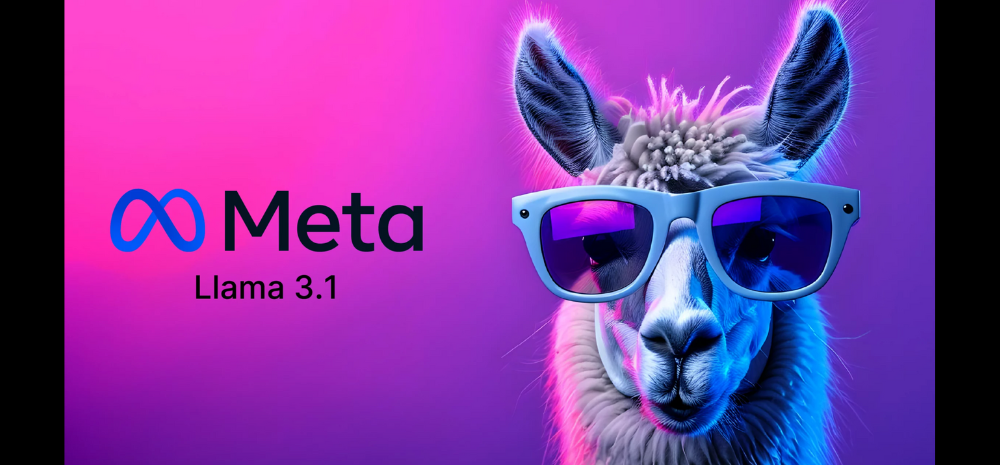Meta has launched its latest and largest open-source language model, with support from partners NVIDIA, Google Cloud, Azure, and AWS, its name is Llama 3.1 AI Model. Llama 3.1 comes in three sizes: 8B, 70B, and 405B parameters, with the 405B model being one of the most powerful open-source models available. It shines in general knowledge, steerability, math, tool use, and multilingual translation.

“Meta’s Llama 3.1: Benchmark Success, Multilingual Support, and Advanced Capabilities”
Llama 3.1 execute well in benchmarks, scoring 73.8 on the MATH benchmark, close to GPT-4o’s 76.6 and surpassing Claude 3.5 Sonnet’s 71.1. It supports multiple languages, including Spanish, Portuguese, Italian, German, Thai, French, and Hindi, making it useful for various users and applications worldwide.
The notable improvement is its enlarged context window, supporting up to 128,000 tokens compared to Llama 3’s 8,192. This growth enables the model to handle longer texts, improving its ability to perform complex reasoning tasks. In addition, Llama 3.1 405B is a powerful tool for synthetic data generation, setting a new standard for generative AI. It can build high-quality task-specific synthetic data for training other models, enhancing accuracy in fields like finance, retail, and telecommunications.
One of Llama 3.1 405B’s remarkable features is its potential for model distillation, which means transferring its capabilities to smaller, more efficient models. This method can produce compact models with similar performance at lower costs and reduced latency, ideal for resource-constrained environments. This capability marks important achievement in open-source AI.
Meta’s Llama 3.1: Advancing Open-Source AI with Enhanced Tool Use and Robust Security
The Llama 3.1 Instruct models are fine-tuned for tool use, optimizing their ability to interface with supportive programs for tasks like searches, image generation, code execution, and mathematical reasoning. They also help zero-shot tool use, integrating smoothly with previously unseen tools. These improvements give Llama 3.1 state-of-the-art potential in general knowledge, math, tool use, and multilingual translation.
Meta has also present robust security measures, including Llama Guard 3 for input and output moderation and Prompt Guard to detect and respond to prompt injection and jailbreak inputs.
Meta’s investment in Llama 3.1 shows its promise to advance in open-source AI. The availability of Llama 3.1 as an open-source model authorize developers to customize, train on new datasets, and fine-tune the models without sharing data with Meta. Meta CEO Mark Zuckerberg compares this to the rise of open-source software like Linux, anticipating that open AI development will rapidly close the gap with closed options, authorizing the broader developer community.













